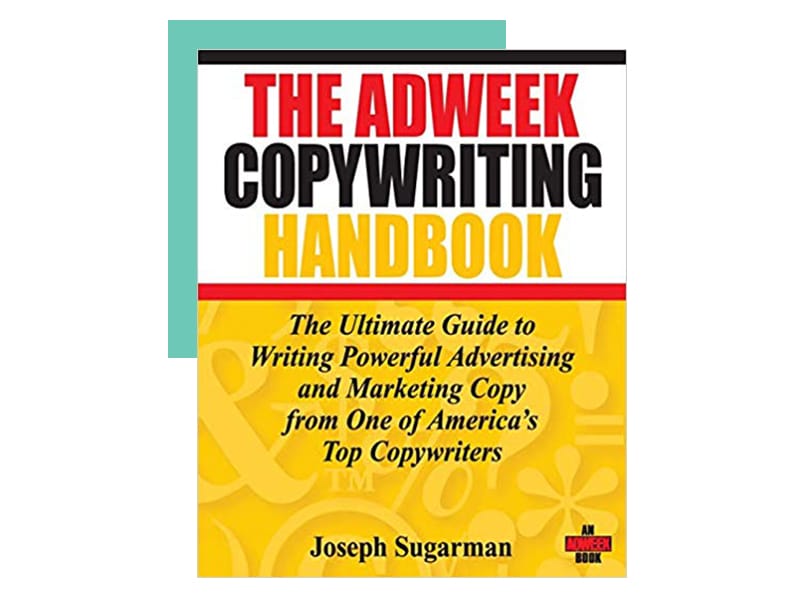Repurposing ads (or content) that worked in the past might be more effective than starting from scratch.
Collecting cash from and bankrupting other players as you cruise around the board in a little metal battleship isn’t nearly as thrilling as generating leads—and sales—from awesome advertising. And when it comes to this, few content creators did it better than David Ogilvy.
He once remarked in his book, Ogilvy On Advertising, to “Repeat your winners. If you are lucky enough to write a good advertisement, repeat it until it stops selling. Scores of good advertisements have been discarded before they lost their potency.”
So in essence, repeat successful ads–ads that have been proven to work–until it’s no longer feasible.
Creative ads are good–many are well thought out with a slick production value–but original content is just that: original.
For instance, office suite software provider, Zoho, used the sky to promote its CRM during a Salesforce conference. In particular, they used airplanes to spell out a link in the big blue, which then led viewers to a landing page that encouraged visitors to outsmart Einstein.
Zoho was trying to promote its new smart CRM. It’s a creative idea, but there’s no connection between Einstein and CRM. The idea could’ve easily tanked. This is why creative ads, at least for the purpose of selling, aren’t preferable to tested ads that are proven to generate profits.
Creative ads have never been tried, so the return on investment is unclear.
Ogilvy didn’t think much of creativity in advertising. He had very clear ideas of what made a good plug and what didn’t.
And good ads in his view, weren’t creative at all—they simply sold the product.
Ogilvy’s approach isn’t without its advocates. Robert W. Bly—arguably “America’s Top Copywriter”— would agree with Ogilvy’s views on the components of a good advert. Bly says in very clear and unmistakable terms that the purpose of ads is to sell.
How can MESH help you?
Founded by an experienced life sciences marketing industry veteran, we help you accelerate growth at every stage, from innovation to exit.
Schedule your FREE 20-min Zoom call today!
Full stop.
So if you’re writing to sell, there are certain trigger words and phrases that have been battle-tested and proven to work. An example of such vocabulary might include words like, “free,” “secret,” “discover,” “win”—the list goes on.
The point is that many content creators use the same ideas and frames in their work that other success stories used. It’s literally how content is repurposed. Although whole sentences and phrases aren’t copied verbatim.
That’s plagiarism.
But there’s one person whose success you can definitely rip off: yourself.
Repurposing Content
It’s not a crime to recycle and reuse your own work, converting that webinar into an eBook or a podcast to web copy. The possibilities are endless and saves you from having to reinvent the wheel every time you create content.
One way to repurpose work is to change it enough so that it appeals to a different set of emotions.
Emotions are old hat, though—content creators have been using them to push prospects’ buttons for a long time.
The point is, just knowing that emotional triggers exist isn’t enough. You’ve got to know the psychology behind them.
Something you can use right now that uses both emotional triggers and psychology is the expert work of Robert B. Cialdini.
In his landmark book on the subject of persuasion, Influence: The Psychology of Persuasion, he defines six psychological tactics you can use to get people to do what you want them to.
For example, one psychological principle involves scarcity. If you can’t have a lot of something, it is, by definition, scarce. This creates panic. People then rush to get the object before it’s gone.
The Disney Vault is a great example of this. What Disney did–”did” because the Disney Vault is no more–was released movies for a certain amount of time. Then, when that time expired, the movies would no longer be available until Disney decided to remaster them.
There’s something you can learn here from Disney’s experimentation with scarcity. You can repeat ads that have worked well in the past and when they start to lose effectiveness, put those ads on pause. Then, bring them back for a brief period of time, only better.
That’s what Disney did (they use Disney+ now), that’s what Ogilvy did, and that’s what you should do: repeat your winners.
But as long as we’re talking about repurposing content, an emotion you can use to re-engage prospects and customers is curiosity.
In fact, that’s what famous copywriter, Joseph Sugarman, did to sell sunglasses, as we’ll soon see…
Using Curiosity to Repurpose Content
Curiosity is a powerful emotion. It’s been proven to prime–to psychologically influence–someone to learn more.
The use of curiosity to inspire learning was expertly used by Sugarman, who relied on curiosity to sell BluBlocker sunglasses, according to his legacy work, The AdWeek Copywriting Handbook.
He would go out and look for unsuspecting people, have them try on the sunglasses, and catch their reaction on video.
The thing was, though, he never really showed the audience what it was like to look through a pair, only the response of the people when they tried them on. This was a deliberate use of curiosity, and it worked well.
But sunglasses are a B2C purchase. A B2B instance of a brand using curiosity would be the earlier Zoho example. Even if Zoho did spell their message in the sky at a Salesforce conference, people might still wonder why and what Zoho is up to next.
This isn’t including the people who saw it who weren’t part of the conference. The takeaway here is that you want prospects and customers to keep coming to you for more. And you want them coming back to you for different ways your product or service can satisfy their needs. In essence, you are repeating your winners, selling until you can’t.
This leads to a great lesson Sugarman also gives to readers of his handbook: never sell the features or benefits of a product or service. Sell the concept of it instead.
For example, when tasked with selling a digital watch that used a laser beam in its manufacturing process, he just ran ads explaining the watch features because it was a new technology at the time. As they became mainstream, he then had to run ads on concepts (“the world’s thinnest digital watch or one with a built-in alarm…”).
If your product or service is new, sell it on that–its newness. If it’s old, sell it on something else.
Insurance companies are a great B2B example of this because insurance has always been the same in concept (not policy, mind you).
Here, you’re still selling the same product, or using the same ad concept—only what you emphasize is different. You’re not being creative, not being original. You’re repurposing content. You’re selling until you can’t.
Have you had success with repurposing content?







